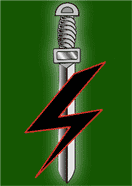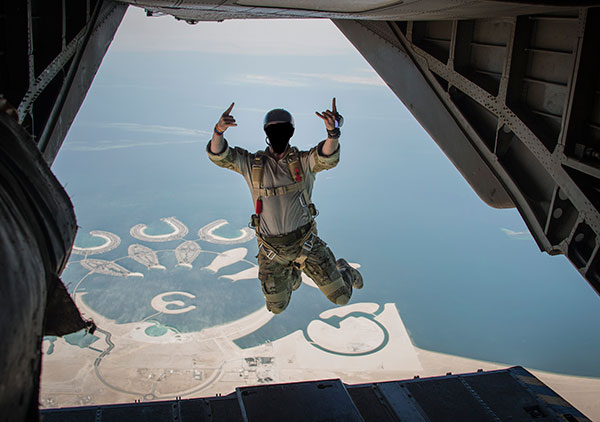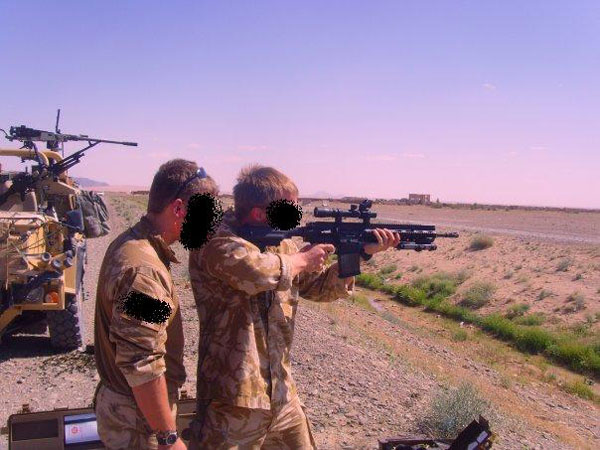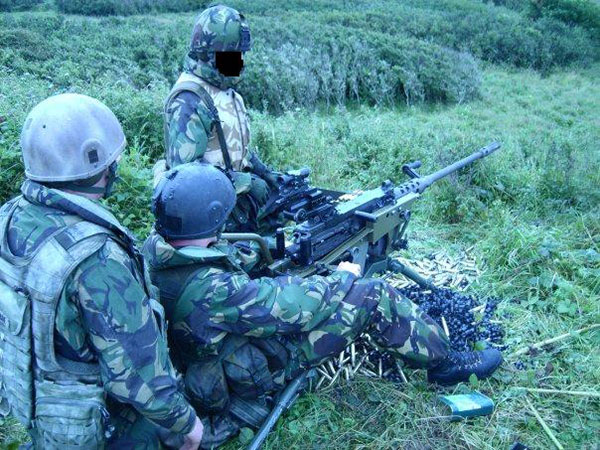Special Forces Support Group (SFSG)
The Special Forces Support Group (SFSG) was formed in 2006 and is based around a core component of members of the 1st Battalion, Parachute Regiment (1 PARA), with additional troops from the Royal Marines and the RAF regiment. The SFSG provides specialised support to United Kingdom Special Forces (UKSF) operations.
SFSG Role
The roles of the SFSG include :
- Acting as a quick reaction force for SAS/SBS operations
- Sealing off and guarding an area of operation
- Taking part in large scale offensive operations alongside SAS/SBS forces
- Carrying out secondary assaults and diversionary raids
- Acting as a 'blocking force' against counter attacks.
- Training / mentoring foreign militaries
- Domestic counter-terrorism (CT)
Each of the SFSG's four Strike Companies rotate into one of four six month commitments:
Global Commitments (Operations)
The company assigned to this task is typically split into sections / small teams and sent on operations around the world. Current theatres may include Afghanistan, Iraq and Syria.
Extreme High Readiness
The SFSG company assigned to the Extreme High Readiness task forms part of the United Kingdom Counter Terrorism Task Group and is on standby to respond to a terror attack in the United Kingdom. SFSG operators undergo extensive Close Quarters Battle (CQB) training for this role.
Contingency
The High Readiness Company is on standby to deploy anywhere in the world in response to a crisis situation.
Training
The one SFSG company not on operations or on contingency commitments undergoes extensive pre-depolyment training in order to maintain skills and prepare for its next task.
A model for the kind of operation that the SFSG has been created for can be seen in the 2000 Sierra Leone 'Operation Barras', in which elements of 1 PARA attacked a rebel base whilst the SAS/SBS rescued fellow soldiers from a nearby camp. A comparable relationship exists between the 75th Ranger Regiment and SFOD-1 (Delta Force) in the U.S. Military. The Rangers provided perimeter security for Delta Force operations in Somalia in 1993, as portrayed in the film, Black Hawk Down.
Apart from giving direct support to SAS/SBS missions, the SFSG also provides specialist training support. One of the traditional roles of the Special Air Service has been to provide foreign militaries with specialist training. Since much of this training does not necessarily require the skills of the SAS, such training tasks can now be performed by members of the SFSG, thus freeing the SAS up for direct combat missions. During the campaign in Afghanistan, the SFSG trained and mentored Afghan special forces and other troops. (read report).

SFSG Components
The makeup of the SFSG is as follows:
1 PARA
The bulk of the SFSG is made up from the 1st Batallion Parachute Regiment. Paras from the other two regular Batallions, 2 and 3 PARA, can apply to the SFSG after two years service.
Royal Marines
Commandos from the Royal Marines provide another element of the Special Forces Support Group. The Royal Marines add their considerable expertise in maritime operations to the SFSG mix. About a company-strength contingent of Royal Marines has been integrated into the SFSG. Initially, they formed their own seperate company (F Coy). Later, they were spread throughout the group.
RAF Regiment
The RAF Regiment commited at least one flight (the equivalent of a platoon, around 30 men) of RAF Gunners from II Squadron to the SFSG. The RAF Regiment contingent includes Joint Terminal Attack Controllers (JTACs) in the Joint Fires Cell.

SFSG Organisation
The exact SFSG order of battle (ORBAT) has not been disclosed to the public domain, although some details can be gleaned from open source publications.
- Battalion Headquarters (BHQ)
- Headquarters (HQ) Company (formerly D Company)
- Quartermasters
- Motor Transport Platoon (MT Platoon)
- Regimental Administration Office (RAO)
- Regiment Aid Post
- Catering Platoon
- Operational Readiness Wing
- General Training Cell
Runs the 'Unit Operator Cadre' which trains new SFSG operatives to 'SFSG Operator Qualification' standards. - Counter Terrorism (CT) Cell
- Campaigns Training Cell
- Contingency Cell
- General Training Cell
- Medical Support Detachment
Provides Combat Medical Technicians (CMTs).
- 4 x Strike Companies
- A Coy
- B Coy
- C Coy
- F Coy
- Support Company (S Coy)
Provides direct and in-direct fire support to the SFSG Strike Companies.- Direct Fires Platoon
(HMG, GMG, GPMG, Javelin). - Joint Fires
- Joint Tactical Air Controllers (JTACs) - tasked with calling in close air support
- Mortars Platoon
- Direct Fires Platoon
- R Company (R Coy)
A relatively recent (2018) restructuring of the SFSG has resulted in the creation of R Coy, which is configured as the unit's ISTAR (intelligence, surveillance, target aquisition, reconnaissance) and communications specialists.- Sniper Platoon
Provides sniper teams to support other SFSG elements. - U Troop
Carries out reconnaissance. - J6 Signals Platoon
Provides signals detachments to other SFSG elements. - J2 Intelligence Platoon
Intelligence Corps personnel attached to the SFSG provide operational intelligence.
- Sniper Platoon
SFSG Weapons
Aside from the standard array of weapons available to a British military unit, the SFSG is known to employ the L119A1 carbine. Sidearms include Sig Sauer P226 and Glock 17 pistols.


SFSG operations
Details of SFSG operations remain sketchy at this time, although a handful of reports have surfaced. On multiple occasions, the SFSG were deployed in support UKSF during operations in Afghanistan and Iraq.
Iraq - Task Force Red / Maroon
Shortly after the units inception, it was reported that a company from the SFSG had been assigned to the US-led Task Force 145 (TF-145). TF-145, later renamed as TF-88, operated in Iraq and was responsible for hunting down senior Al-Qaeda members such as al-Zarqawi.
The British element of TF-88 consisted of 1 SAS Squadron ('Task Force Black'), a company of SFSG (reported by different sources as 'Task Force Red' and 'Task Force Maroon') plus associated supporting units (SRR, 18 UKSF Signals, Joint Support Group, 7 & 47 Squadron RAF among others).
The SFSG operated as a quick reaction force (QRF) and security screen for SAS operations. One such occasion, the SFSG were positioned around the area of an insurgent's bomb-making factory, providing security for an SAS sniper team's operation.
The SFSG also supported the SAS operation to free British peace activist Norman Kember, who had been kidnapped by Iraqi criminals.
Afghanistan
Operation Medusa
SBS and SFSG were reportedly involved in Operation Medusa, in September 2006. OP Medusa was a combined attack on Taliban forces in the strategically important Panjwayi district of Afghanistan that featured NATO units from the UK, US, Canada and Holland. The SBS and SFSG played key roles in the coordinated attacks acting as both attacking forces (SBS) and cut-off groups (SFSG).
UKSF Raid On Taliban Fort
Late August 2009 - SFSG troops supported a raid by the SBS on a Taliban bomb factory in Helmand Province. The SFSG reportedly carried out diversionary attacks during this operation.
more info : UKSF Raid On Taliban FortUKSF Raid On Taliban Fort
September 2009 - A Paratrooper with the SFSG is killed during an SBS/SFSG operation to free a British journalist and his interpreter held captive in Afghanistan.
more info : British Special Forces Free HostageAfghan Training
A report from December 2009 describes a SFSG role in training Afghani troops.
more info : Task Force CrichtonParachute Assault
A December 2010 news item reports on combat jumps made by 1 PARA (SFSG) in Afghanistan.
more info : 1 PARA (SFSG) Parachute Raids In Afghanistan









